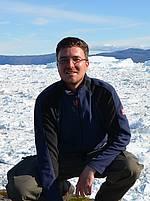ProjektJSPS Joint Seminar - Bodenerosion, Kohlenstoffakkumulation und Entwicklung von Bodenbakterien in Waldökosystemen:…
Grunddaten
Titel:
JSPS Joint Seminar - Bodenerosion, Kohlenstoffakkumulation und Entwicklung von Bodenbakterien in Waldökosystemen: Analyse mit Hilfe von Techniken des maschinellen Lernens
Laufzeit:
01.04.2023 bis 31.03.2024
Abstract / Kurz- beschreibung:
Forest ecosystems account for about 30% of the world's land area. Woodlands foster highly permeable and water-retentive soils, store high levels of carbon and nutrients in the soil, and abundant soil animals and soil bacteria facilitate the decomposition of organic matter. Those functions are particularly well demonstrated in surface soils at a depth of about 30 cm.
In typical forests, underlying soils are generally regarded as well-protected against erosion and surface soils mostly preserve their fertility as the forest floor vegetation and fallen leaves and branches prevent raindrop impacts on the ground. However, in some forests, soil erosion is becoming more serious due to underdeveloped forest floor vegetation caused by non-thinning, feeding damage to forest floor vegetation caused by an increase in deer, and soil disturbance caused by the construction of forest roads and skid trails. In such forests, topsoil can actually be lost with partly severe impacts. Thus, in such woodlands with heavy anthropogenic disturbance, it has been shown that sediment transport also depletes the soil, and to some extent it loses its function as a carbon sink and diversity hotspot for soil organisms. In this context, the loss of soil organic carbon as well as a decline in soil organisms and especially soil bacterial communities has been demonstrated.
However, many erosion models do not account for such damages as forest vegetation is generally regarded as less prone to soil erosion. Thus, common algorithms do often simplify and underestimate sediment loss. At the same time, soil carbon stocks, organic matter retention and the abundance of soil bacterial communities can be overestimated in models. The use of artificial intelligence and especially machine learning techniques have made great leaps in development in recent years and are currently also being strongly used in soil science research (e.g. in Digital Soil Mapping). Current projects would now like to increasingly apply these techniques in erosion research, which shows great potential for improving erosion models and especially for refining erosion predictions under vegetation.
Through the introduction of the latest results of research on soil erosion, soil carbon and soil bacterial communities in forest areas with complex topography in both countries, the project will provide an opportunity to learn about the status of field data, analysis methods and data dissemination. Previous studies on soil erosion in forested areas have focused on the phenomenon and not on its spatial distribution, while the effects of soil erosion on soil carbon stocks and the diversity and quantity of soil bacteria have not been considered. It will then provide an opportunity to discuss the adoption and application of artificial intelligence in this subject area.
In typical forests, underlying soils are generally regarded as well-protected against erosion and surface soils mostly preserve their fertility as the forest floor vegetation and fallen leaves and branches prevent raindrop impacts on the ground. However, in some forests, soil erosion is becoming more serious due to underdeveloped forest floor vegetation caused by non-thinning, feeding damage to forest floor vegetation caused by an increase in deer, and soil disturbance caused by the construction of forest roads and skid trails. In such forests, topsoil can actually be lost with partly severe impacts. Thus, in such woodlands with heavy anthropogenic disturbance, it has been shown that sediment transport also depletes the soil, and to some extent it loses its function as a carbon sink and diversity hotspot for soil organisms. In this context, the loss of soil organic carbon as well as a decline in soil organisms and especially soil bacterial communities has been demonstrated.
However, many erosion models do not account for such damages as forest vegetation is generally regarded as less prone to soil erosion. Thus, common algorithms do often simplify and underestimate sediment loss. At the same time, soil carbon stocks, organic matter retention and the abundance of soil bacterial communities can be overestimated in models. The use of artificial intelligence and especially machine learning techniques have made great leaps in development in recent years and are currently also being strongly used in soil science research (e.g. in Digital Soil Mapping). Current projects would now like to increasingly apply these techniques in erosion research, which shows great potential for improving erosion models and especially for refining erosion predictions under vegetation.
Through the introduction of the latest results of research on soil erosion, soil carbon and soil bacterial communities in forest areas with complex topography in both countries, the project will provide an opportunity to learn about the status of field data, analysis methods and data dissemination. Previous studies on soil erosion in forested areas have focused on the phenomenon and not on its spatial distribution, while the effects of soil erosion on soil carbon stocks and the diversity and quantity of soil bacteria have not been considered. It will then provide an opportunity to discuss the adoption and application of artificial intelligence in this subject area.
Schlüsselwörter:
Bodenerosion
soil erosion
maschinelles Lernen
machine learning
Kohlenstoff
Beteiligte Mitarbeiter/innen
Leiter/innen
Forschungsbereich Geographie
Fachbereich Geowissenschaften, Mathematisch-Naturwissenschaftliche Fakultät
Fachbereich Geowissenschaften, Mathematisch-Naturwissenschaftliche Fakultät
Weitere Mitarbeiter/innen
Fachbereich Geowissenschaften
Mathematisch-Naturwissenschaftliche Fakultät
Mathematisch-Naturwissenschaftliche Fakultät
Forschungsbereich Geographie
Fachbereich Geowissenschaften, Mathematisch-Naturwissenschaftliche Fakultät
Fachbereich Geowissenschaften, Mathematisch-Naturwissenschaftliche Fakultät
Lokale Einrichtungen
Forschungsbereich Geographie
Fachbereich Geowissenschaften
Mathematisch-Naturwissenschaftliche Fakultät
Mathematisch-Naturwissenschaftliche Fakultät
Geldgeber
Bonn, Nordrhein-Westfalen, Deutschland
Kooperationen
Tsukuba, Japan


